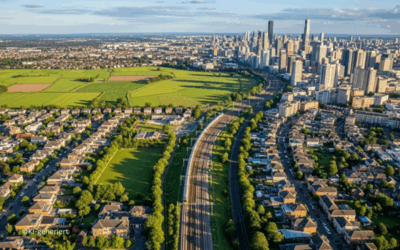The DKKV is…
German Committee for Disaster Reduction e.V. (ger.: Deutsches Komitee Katastrophenvorsorge e.V.)
Newsblog
New WMO report ‘State of Global Water Resources 2024’ published
The World Meteorological Organisation (WMO) has published its State of Global Water Resources 2024 report. It provides a comprehensive overview of the state of global water resources, highlights hydrological trends and supports decision-makers in sustainable water...
New CEDIM short report: Heavy rainfall in Central Europe (September 2025)
A new short report has been published as part of the Forensic Disaster Analyses (FDA) conducted by the Centre for Disaster Management and Risk Reduction Technology (CEDIM) at the Karlsruhe Institute of Technology (KIT): ‘Heavy Rain in Central Europe (September 2025)’....
The ‘Stadt-Land-Plus’ funding programme demonstrates how cooperation can be successful
The ‘Stadt-Land-Plus’ funding initiative of the Federal Ministry of Research, Technology and Space (BMFTR) shows how cities and rural regions can become future-proof through cooperation. Between 2018 and 2025, 22 joint projects developed solutions for settlement...
Else Kröner Fresenius Prize for Medical Development Cooperation 2025: Award for mobile clinics
The Else Kröner Fresenius Prize for Medical Development Cooperation is awarded annually to projects that improve healthcare in developing countries in a sustainable manner. The prize, that comes with a € 100,000 prize money, recognises both the quality and innovative...
Follow us




What is disaster risk reduction?
Storms, natural hazards and extreme events can quickly become a danger to people and the environment. But climate change, extreme urbanization, power outages and fires also offer potential hazards.
A disaster occurs when the functioning of a community or society is impaired or interrupted and, as a result, high human, material, economic and ecological losses occur that cannot be managed alone.
Precautionary measures can help to reduce the consequences and impact of the disaster. Depending on the hazard and personal circumstances, the precautionary measures to be taken may vary.
Find out more about potential hazards and individual precautionary measures on our topic pages.






